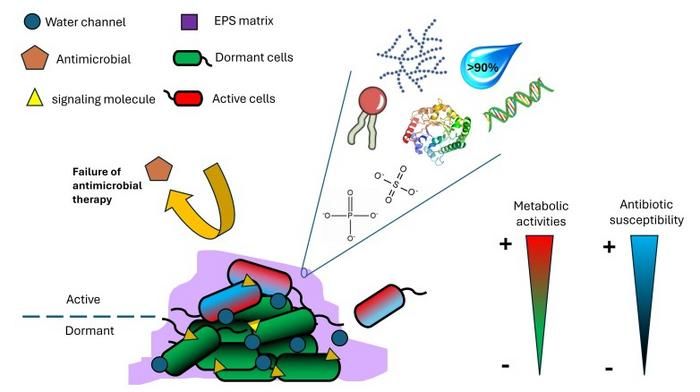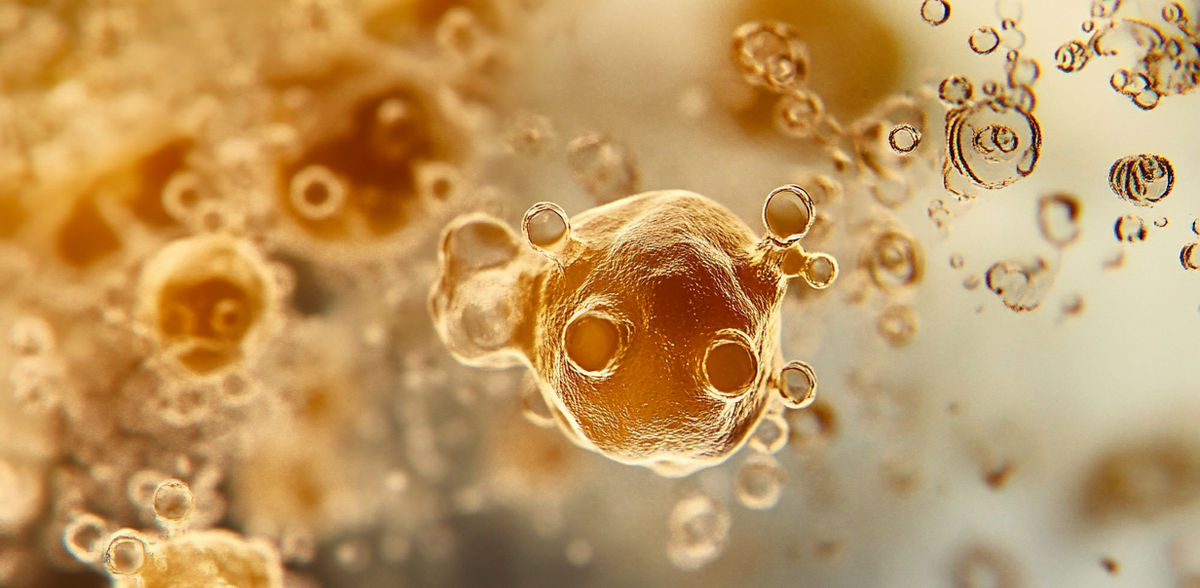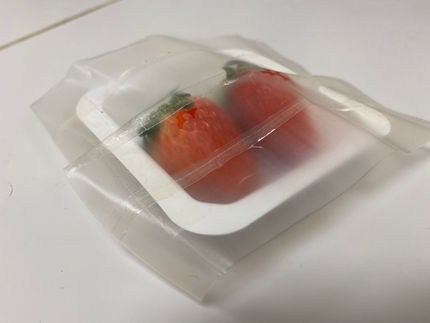New strategies to combat biofilm formation in the food industry to enhance food safety
Advertisement
A research team reveals that biofilm formation on food-contact surfaces in the food supply chain poses a significant challenge, providing an environment for harmful bacteria that can lead to foodborne illnesses and degrade food quality. This review highlights the critical need for innovative solutions to mitigate biofilm formation, enhance food safety, and reduce economic losses in the food industry.

Characteristics of microbial biofilms.
The authors
Biofilms are complex microbial communities embedded within a protective matrix, allowing bacteria to thrive on surfaces in food processing environments, such as metal, plastic, and glass. These biofilms serve as persistent reservoirs for bacteria, contaminating raw materials and processed products, which contributes to food spoilage, disease transmission, and the spread of antibiotic resistance genes. The ability of biofilms to resist standard cleaning and disinfection methods makes them a significant public health concern, particularly in light of evolving foodborne pathogens and the complexities of modern food production processes.
A study (DOI:10.48130/fmr-0024-0016 ) published in Food Materials Research on 06 August 2024, identifies the need for continued research into the optimization of these technologies for broader applications in the food industry.
The review investigated the formation of biofilms on food-contact surfaces in the food industry, focusing on their significant implications for food safety, spoilage, and public health. Biofilms are complex microbial communities that adhere to surfaces, acting as persistent reservoirs of contamination throughout food processing, potentially leading to the spread of foodborne pathogens such as Salmonella enterica, Listeria monocytogenes, and Staphylococcus aureus. These bacteria form biofilms on various surfaces, including meat and dairy processing equipment, which can lead to reduced product shelf life, increased risk of disease transmission, and substantial economic losses. Approximately 90% of microorganisms in the meat industry form biofilms, resulting in an annual financial loss of $150 million. Additionally, biofilms pose a significant risk to dairy products, as the processing conditions and prolonged storage facilitate microbial attachment, impacting the quality and safety of milk products. The study found that milk lactose enhances biofilm development in Bacillus subtilis through quorum sensing, a mechanism that regulates gene expression based on cell density. Traditional cleaning and disinfectant methods are often ineffective against biofilms, with bacteria in biofilms being up to 1,000 times more resistant to biocides compared to their planktonic counterparts.
There are many novel strategies for biofilm control, such as edible coatings and antibiofilm-coated food-contact surfaces. Edible coatings, made from natural polymers like alginate and chitosan, act as barriers against oxygen, moisture, and microbial contamination, extending food shelf life and reducing spoilage. Additionally, antibiofilm coatings, which release antimicrobial agents, prevent bacterial adhesion and biofilm formation on surfaces, thereby enhancing food safety. The study also underscores the potential of nanotechnology, specifically nanosensors, in rapid detection of biofilms in food environments. Nanosensors provide sensitive, real-time monitoring of biofilm presence, allowing for immediate intervention and improved contamination control
According to the study's lead researcher, Dr. John Smith, “Biofilms are a formidable barrier in food safety due to their resilience against traditional cleaning measures and their role in harboring pathogens. Addressing this issue requires innovative strategies that target biofilm prevention, detection, and eradication to protect public health and maintain food quality.”
Biofilm formation on food-contact surfaces remains a critical challenge in food safety, but innovative approaches such as edible coatings, antibiofilm surfaces, and nanosensor technologies offer promising solutions. By advancing these strategies, the food industry can better safeguard public health, reduce economic losses, and improve food quality, meeting the growing demand for safe and sustainable food production.
Original publication
Other news from the department science
Most read news
More news from our other portals
See the theme worlds for related content
Topic world Food safety
Food safety is at the heart of the food and beverage industry. It ensures that the food we eat every day is not only nutritious, but also free of harmful contaminants. From field to plate, the industry monitors and regulates every step of the process with strict quality controls, advanced testing methods and continuous research.

Topic world Food safety
Food safety is at the heart of the food and beverage industry. It ensures that the food we eat every day is not only nutritious, but also free of harmful contaminants. From field to plate, the industry monitors and regulates every step of the process with strict quality controls, advanced testing methods and continuous research.


























































